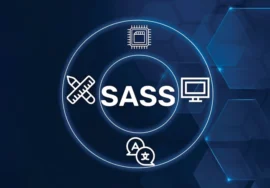
Multilingual Websites with CMS: A Comprehensive Guide to Reaching a Global Audience
The digital landscape is no longer confined by borders. Businesses of all sizes recognize the immense potential of international markets. But, reaching a global audience causes a website that transcends language barriers. This is where multilingual websites with a Content Management System (CMS) come into play.
This comprehensive guide delves into the world of multilingual websites with CMS, equipping you with the knowledge to navigate this crucial aspect of global expansion. We’ll explore the benefits, popular CMS options, key considerations for choosing the right platform, and best practices for creating a successful multilingual website.
Understanding Multilingual Websites and CMS
A multilingual website caters to diverse audiences by presenting content in multiple languages. This allows potential customers to access information and engage with your brand in their native tongue, fostering a more personal and impactful connection.
A CMS (Content Management System) acts as the engine that drives your website. It provides user-friendly work for creating, editing, and publishing content. Integrating multilingual capabilities with your CMS unlocks the power to manage content for different languages from a single platform, streamlining the website management process.
Benefits of Multilingual Websites with CMS
The advantages of implementing a multilingual website with CMS are many and can impact your business:
- Increased Reach and Engagement: By offering content in their native language, you remove a significant barrier for potential customers. This broadens your reach, fosters deeper engagement, and leads to higher conversion rates.
- Enhanced Brand Credibility: A multilingual website shows a commitment to international markets and cultural sensitivity. This projects a professional and trustworthy image, solidifying your brand as a global player.
- Improved SEO Performance: Multilingual websites can be optimized for search engines (SEO) in various languages. This increases organic traffic from targeted regions, propelling your website to the top of search results for international users.
- Streamlined Content Management: A CMS simplifies managing multilingual content. Editors and content creators can create, edit, and publish content in different languages from a centralized platform. This eliminates the need for complex manual updates for each language version of your website.
- Cost-Effectiveness: CMS platforms offer a scalable solution for managing multilingual websites. Compared to traditional methods involving separate websites for each language, CMS fosters operational efficiency and saves on development and maintenance costs.
Popular CMS Options for Multilingual Websites
The good news is that you’re not limited to a single platform for building a multilingual website with CMS. Here’s a breakdown of the most popular options, each with its unique strengths and considerations:
- WordPress: the most widely used CMS. WordPress offers user-friendly work with a vast ecosystem of plugins. Popular options for multilingual functionality include WPML, willing, and Multilingual Press. But, it’s important to note that extensive use of plugins might slow down website performance.
- Joomla: Renowned for its user-friendly work with robust core functionality, Joomla boasts built-in multilingual capabilities. This allows you to create content in multiple languages without relying on third-party plugins. Joomla is a powerful choice for complex multilingual websites with a moderate learning curve.
- Drupal: For enterprise-level websites with extensive multilingual needs, Drupal stands out as a highly customizable and scalable platform. Drupal’s core offers multilingual features, but additional modules might be necessary for advanced functionality. However, Drupal’s complexity requires a higher level of technical expertise to manage effectively.
- Headless CMS Options: Headless CMS platforms like Contentful and Strapi offer a decoupled approach, separating the content management interface from the front-end presentation. This flexibility allows for greater customization and integration with various website frameworks. While headless CMS options provide great control, integrating multilingual functionality often requires additional development or third-party solutions.
Choosing the Right CMS for Your Multilingual Website: A Tailored Approach
In the previous section, we explored several popular CMS platforms suitable for building multilingual websites. Now, let’s delve deeper into the factors that influence choosing the right CMS for your specific needs. By carefully considering these aspects, you can ensure a platform that seamlessly integrates with your workflow and empowers your multilingual ambitions.
1. Website Complexity:
- Simple Websites: If your website primarily features static content with a limited number of languages, a user-friendly CMS like WordPress with a multilingual plugin is a strong contender. Platforms like WordPress offer a gentle learning curve and abundant resources for beginners. Popular multilingual plugins like WPML and Polylang provide a cost-effective solution for managing basic multilingual functionality.
- Complex Websites: Websites with dynamic features, extensive content, or numerous languages might require a more robust CMS. Drupal shines in this category, offering exceptional scalability and customization capabilities. Drupal’s core functionality includes built-in multilingual features, allowing for granular control over content management in various languages. However, Drupal’s complexity necessitates a higher level of technical expertise to manage effectively.
2. Technical Expertise:
- Limited Technical Expertise: If your team has limited experience with website development, a user-friendly CMS with built-in multilingual features is ideal. Joomla stands out here with its intuitive interface and core multilingual capabilities. Joomla allows for the creation and management of multilingual content without relying on third-party plugins, simplifying the process for less technical users.
- Strong Technical Expertise: For teams comfortable with coding and development, a headless CMS like Contentful provides ultimate flexibility. Headless CMS platforms separate the content management interface from the front-end presentation, allowing for greater customization and integration with various frameworks. This approach empowers developers to tailor the website experience for each language version. However, keep in mind that integrating multilingual functionality with headless CMS might require additional development or third-party solutions.
3. Budget:
- Cost-Effectiveness: Open-source CMS platforms like WordPress offer a budget-friendly solution. While the core software is free, you might need to invest in plugins and potential themes for advanced multilingual functionality.
- Enterprise-Grade Solutions: For complex websites or teams requiring extensive support, enterprise-grade CMS solutions like Drupal might come with licensing fees. Additionally, customization and development services for a highly tailored multilingual website can add to the overall cost.
4. Specific Needs:
Beyond the core functionalities, consider any specific requirements for your website:
- Right-to-Left Language Support: Does your multilingual strategy involve languages with right-to-left text directional (like Arabic or Hebrew)? Ensure the chosen CMS can handle these languages effectively, including proper text formatting and layout adjustments.
- Workflow Integration: Evaluate how the CMS integrates with your existing content creation and translation workflows. Some CMS platforms offer built-in translation management tools or seamless integration with third-party translation services.
- E-commerce Functionality: If your website involves e-commerce features, choose a CMS with robust multilingual capabilities for product listings, shopping carts, and the checkout process in multiple languages.
Conclusion:
Choosing the right CMS for your multilingual website requires careful consideration of your website’s complexity, technical expertise, budget, and specific needs. By analyzing these factors, you can select a platform that empowers efficient content management, streamlines your multilingual strategy, and ultimately propels your website towards success in the global marketplace. Remember, the ideal CMS is a valuable tool that facilitates growth, not a hindrance.





